Moments of whimsy and play contrasted with angles and interactive graphics elevate the learning experience for students at Pawnee Elementary School.
Our unique approach to architecture and design empowers communities to take ownership in the design process.
An adaptive reuse of existing community center results in a colorful and interactive early childhood center.
The new addition at Blue Springs High School brings freshman back under the same roof as the rest of the student population.
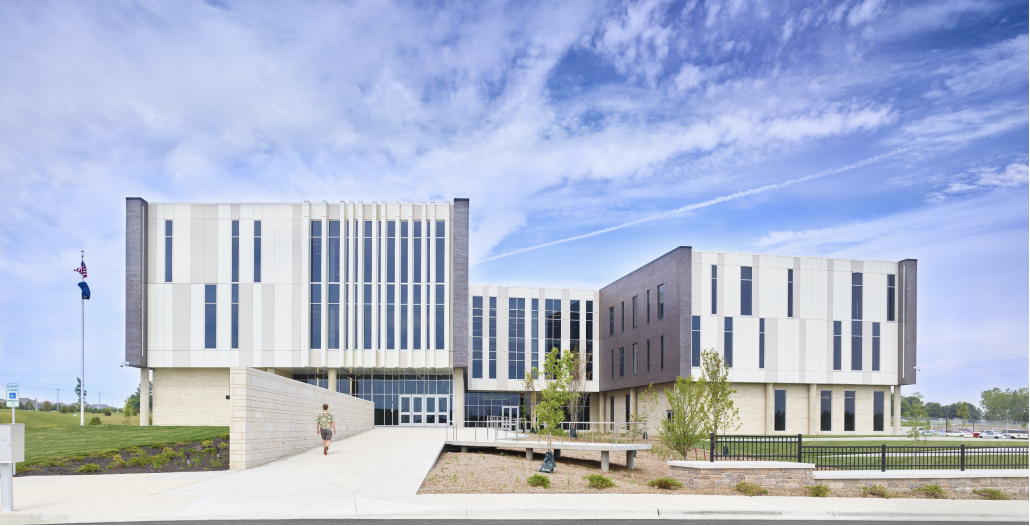
Our architectural design process is established on the foundation of what we call “Co-Creation.”

We work to provide a sense of comfort and choice while transforming every square foot into a learning space.
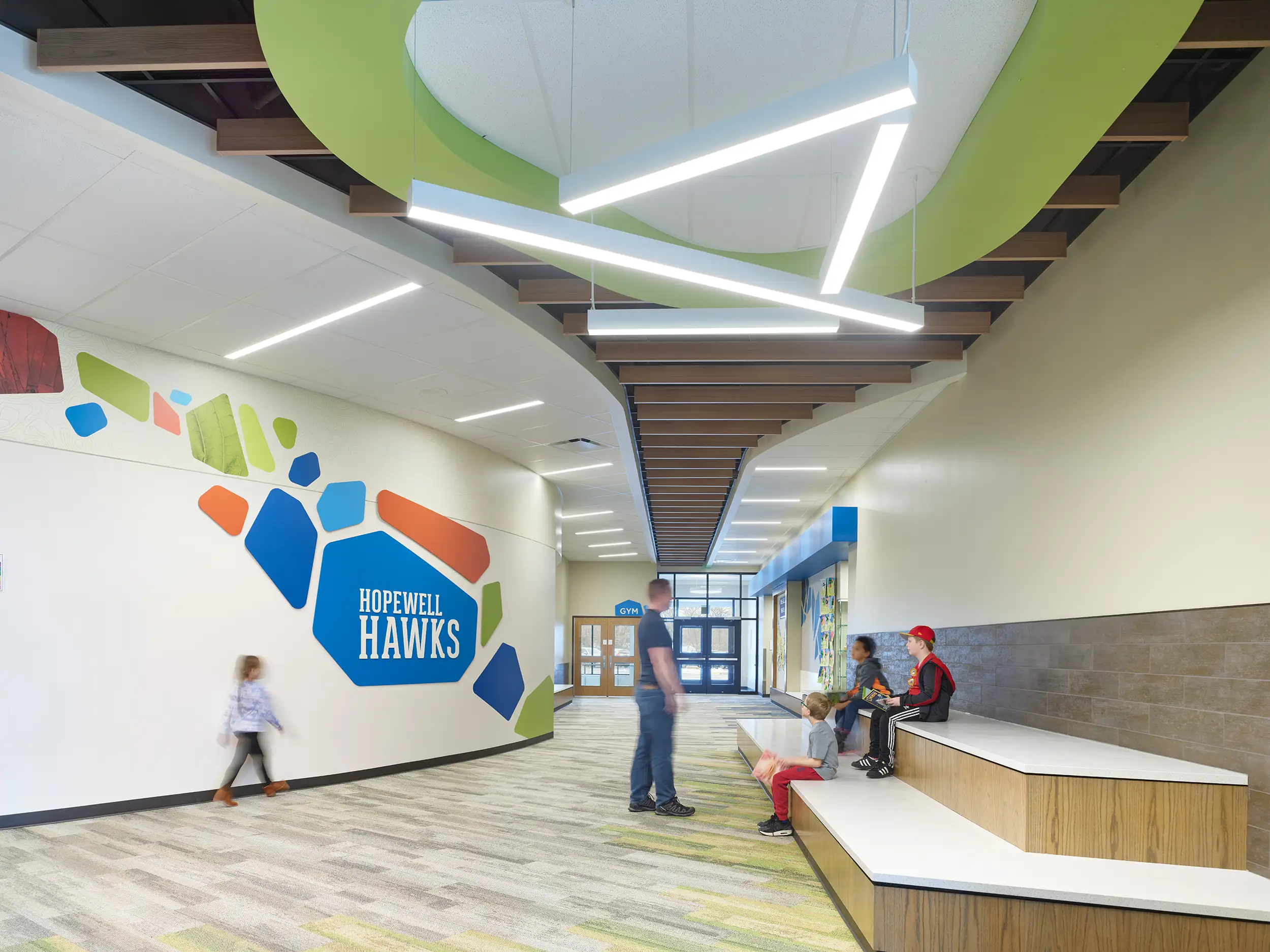
Graphics enrich the human experience by activating brand identity, creating a mood and connecting people to place.
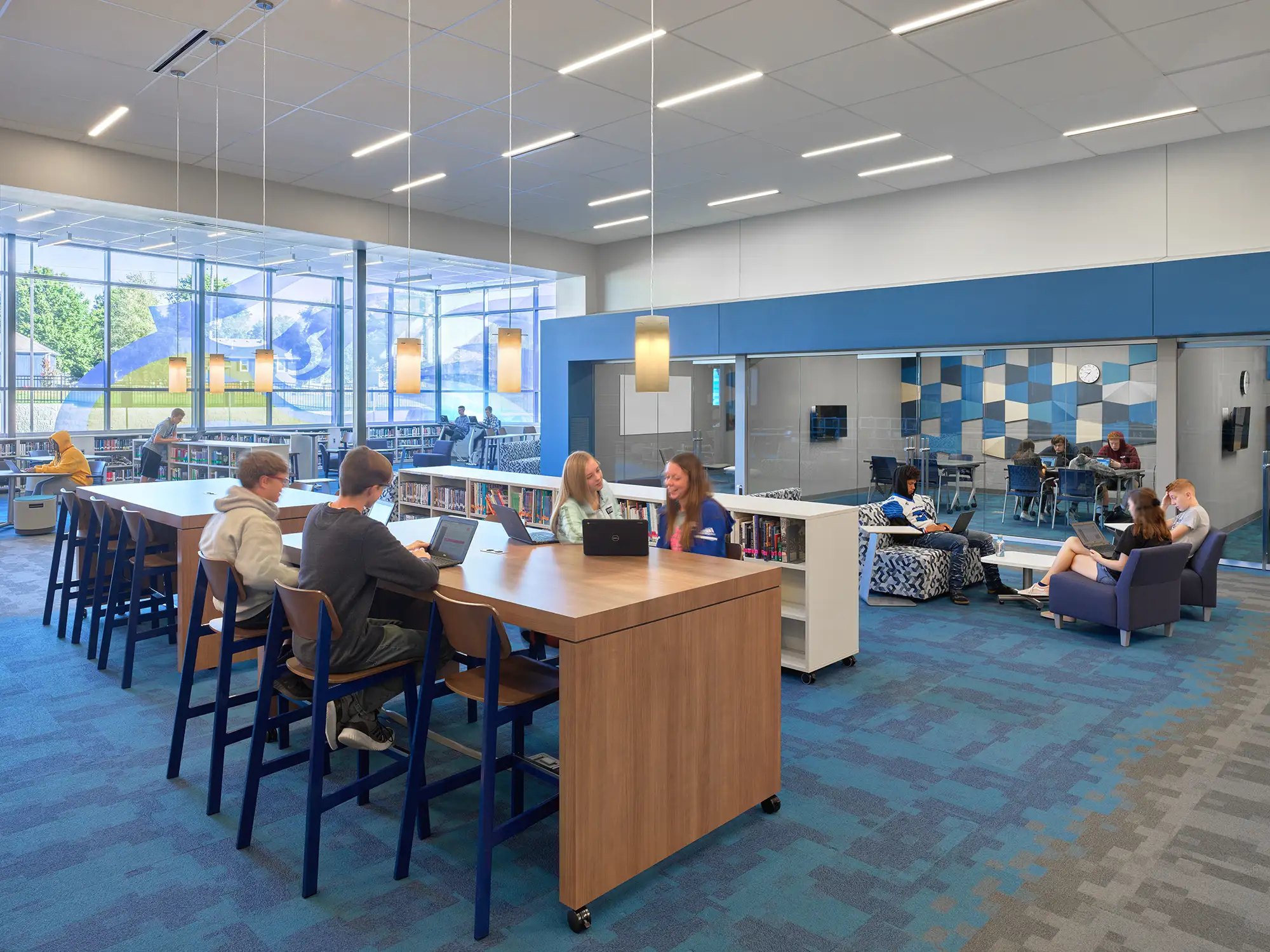
The master plan allows for transparency and universal understanding among your educational partners, helping prepare for future decisions that will impact your students and community.
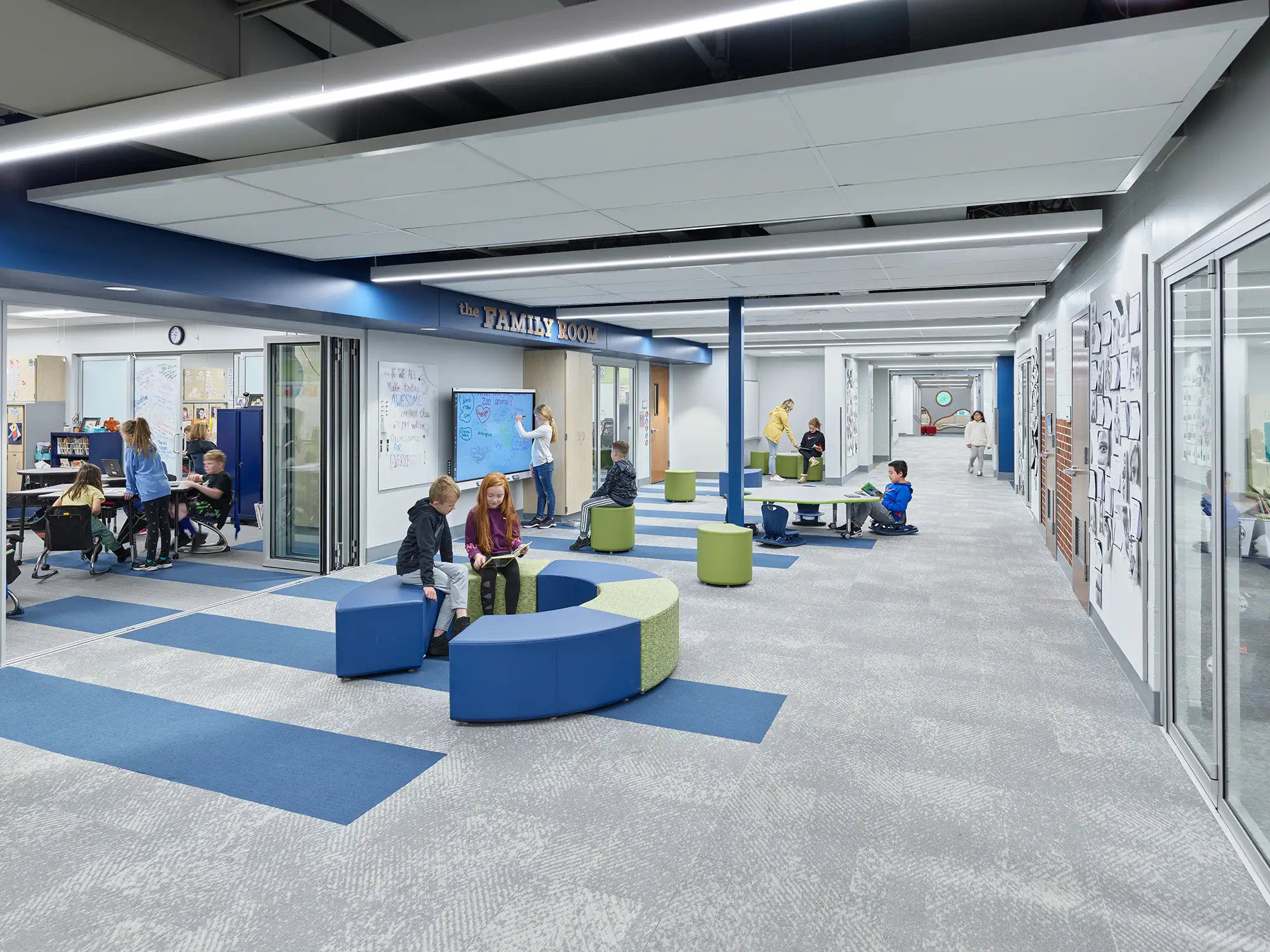
We incorporate the furniture, fixtures and equipment into the architectural design from the start, bringing alignment to the whole student experience and ensuring a cohesive finished space.
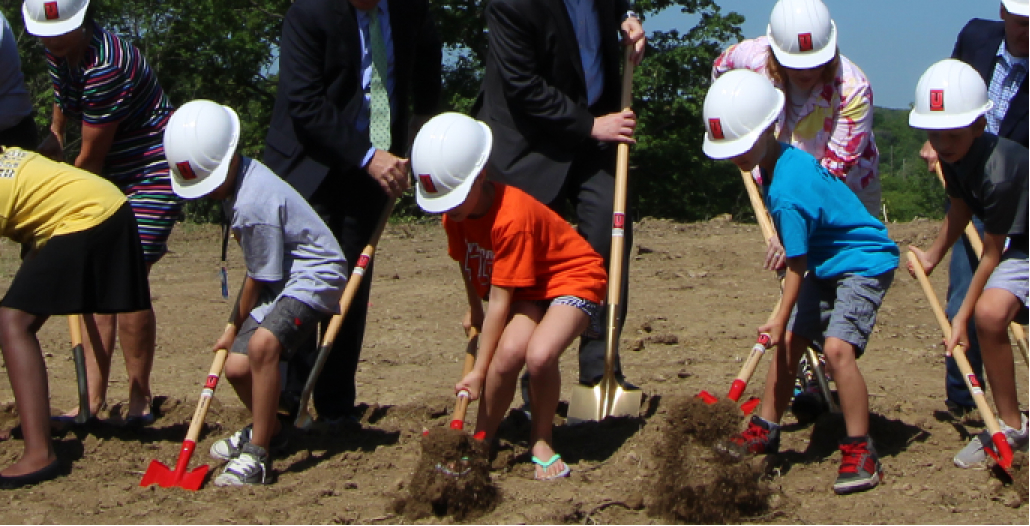
We believe it’s crucial to engage key stakeholders in the earliest stages of visioning – then take them with us through the process, gaining consensus and building excitement.

Our architectural design process is established on the foundation of what we call “Co-Creation.”

We work to provide a sense of comfort and choice while transforming every square foot into a learning space.

Graphics enrich the human experience by activating brand identity, creating a mood and connecting people to place.

The master plan allows for transparency and universal understanding among your educational partners, helping prepare for future decisions that will impact your students and community.

We incorporate the furniture, fixtures and equipment into the architectural design from the start, bringing alignment to the whole student experience and ensuring a cohesive finished space.

We believe it’s crucial to engage key stakeholders in the earliest stages of visioning – then take them with us through the process, gaining consensus and building excitement.
Our architecture firm doesn’t simply design learning environments, we design the community and culture happening around them, positively impacting the future of the community and its members.
Our architecture firm doesn’t simply design learning environments, we design the community and culture happening around them, positively impacting the future of the community and its members.
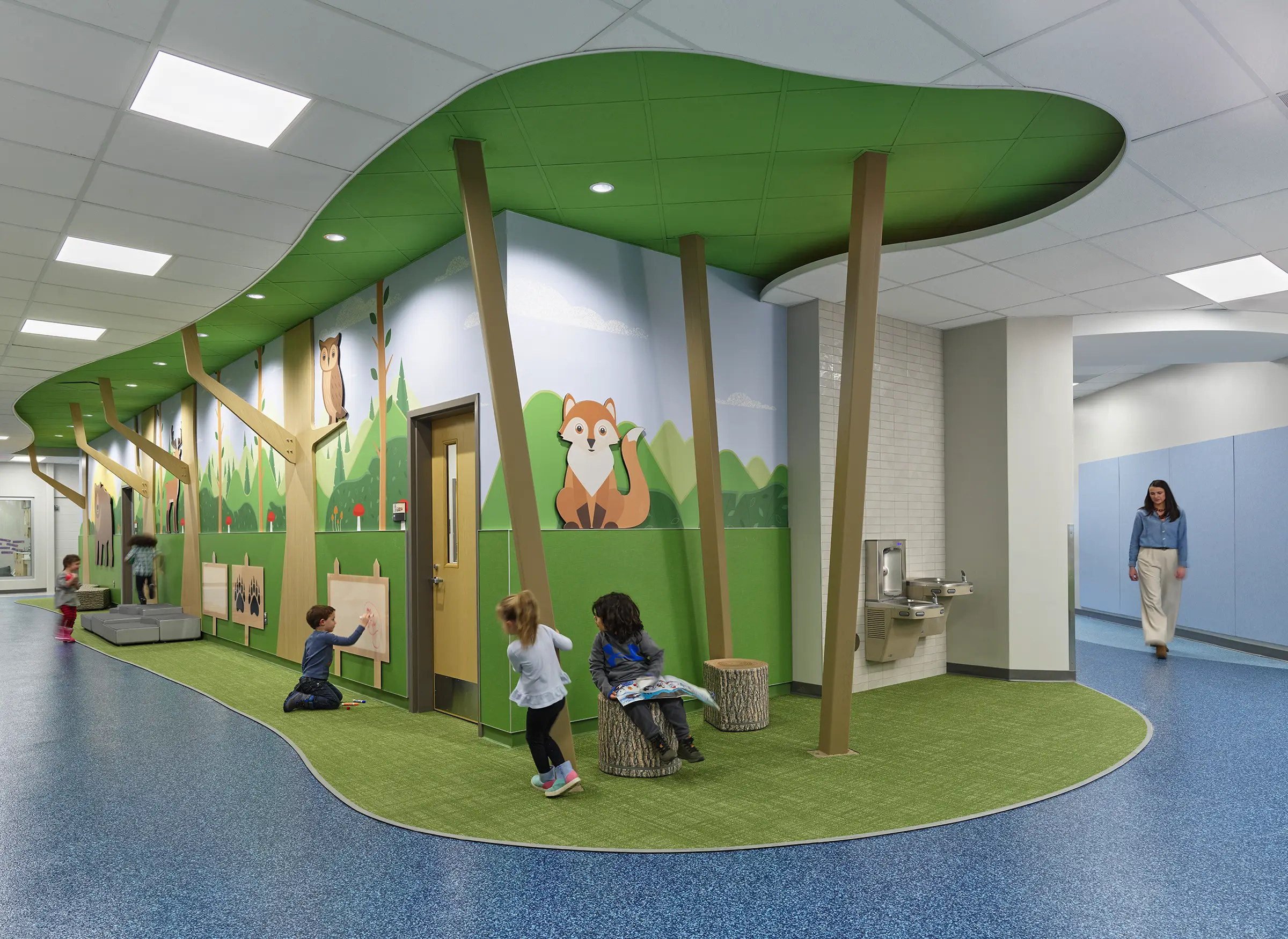
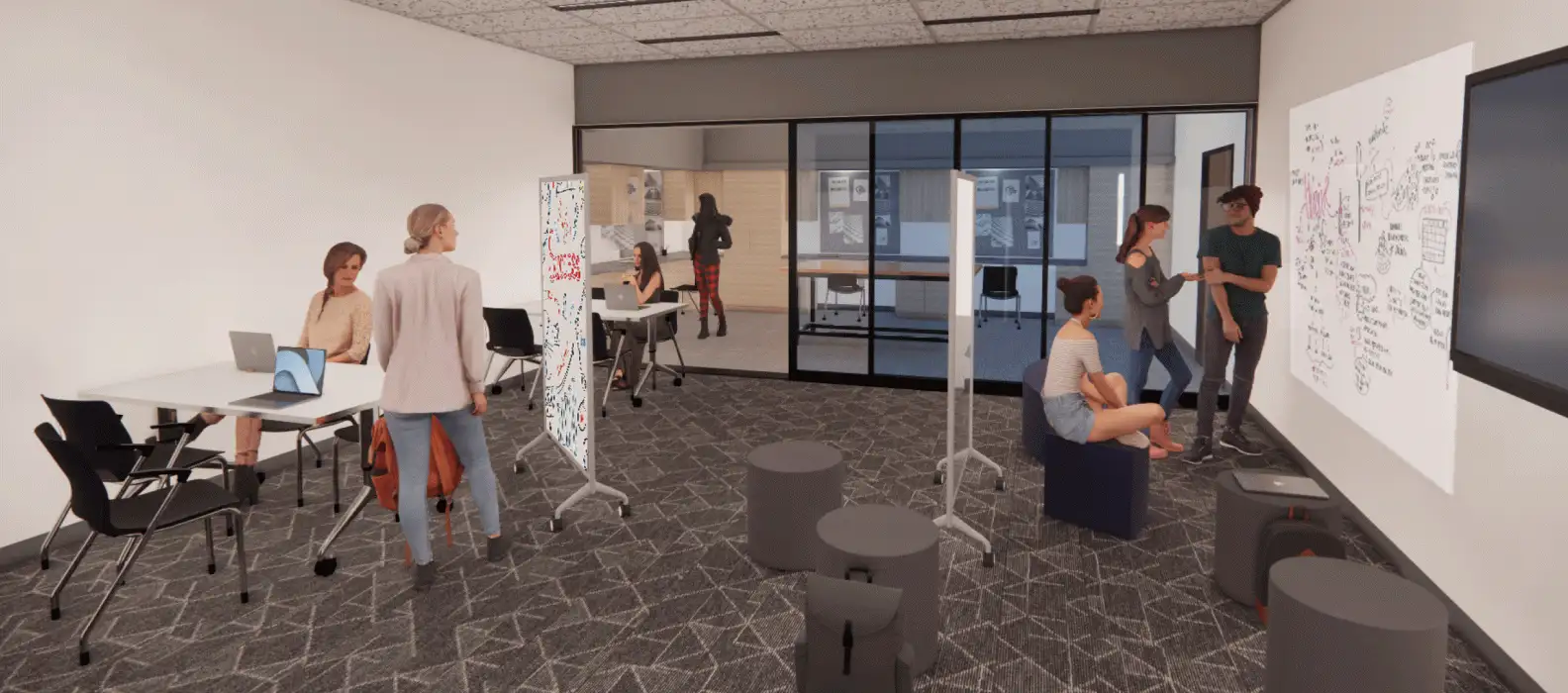


Sign up to hear about the latest news from our architecture firms in Denver and Kansas City.
© 2024 – Hollis + Miller. All rights reserved.